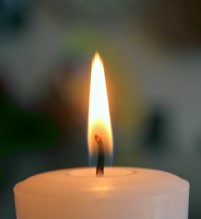Most of the grade-school volcanoes made for science fair projects are made using a baking soda and vinegar reaction to create a foam to represent the lava. Dishwashing soap is usually added, along with food coloring to get a red or orange appearance.
Baking soda is a salt made from a strong base and a weak acid. The strong base is sodium hydroxide, and the weak acid is carbon dioxide dissolved in water, the same thing you drink in soda water.
When a stronger acid is added to the baking soda, it replaces the weak acid. Since the weak acid is the same fizzy water we drink in sodas, it fizzes in the volcano and makes tiny bubbles. The dishwashing soap helps these bubbles form a foam instead of just popping when they reach the surface.
If you like your volcanoes with real flames and sparks, you can use ammonium dichromate. A small pile of the compound can be lit with a match. It then burns with pretty red flames and orange sparks, and the ash expands, producing a typical volcano cone.
The ammonium dichromate is not actually burning. It is undergoing thermal decomposition. The atoms in the molecule are rearranging themselves to be in a lower energy state. If the compound is heated, it breaks down into green chromium oxide ash, water vapor, and nitrogen gas.
